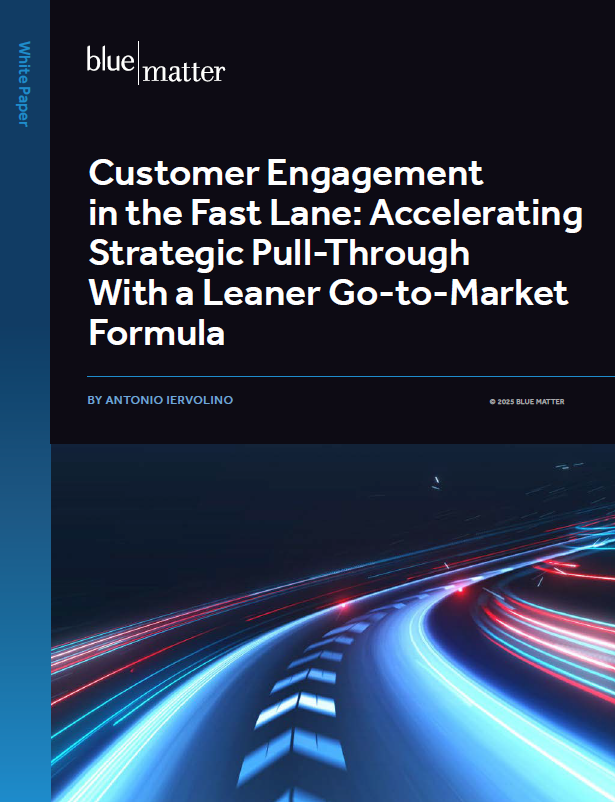
Every day, the sun rises and the sun sets. Here’s another thing that’s almost as dependable: national payers in Europe are facing increased pressures on their healthcare budgets. Payers want to provide access and fund innovative treatments to improve patient care, but they need to do so in the context of constrained budgets. However, the factors that drive that constant state of affairs do evolve over time, as do the actions payers take in an effort to reduce costs while maintaining quality care.
In this article, we look at some of the current cost drivers in European markets. In addition, we identify five related trends affecting the market access environment across the continent, as well as their potential implications for biopharma companies.
Current Cost Drivers
COVID Pandemic
By now, everyone is tired of hearing about the COVID-19 pandemic. However, it has placed significant additional burden on European healthcare budgets and temporarily shifted some attention and resources to COVID-related research, treatments, and vaccines.
Government expenditures have been high on COVID-related measures. For example, in March 2020, the German government approved an additional budget for the Health Ministry of €3.5 billion, an increase of about 20%.[1] France provided an additional €8 billion to its national health system[2] while Italy added €7.5 billion..[3]
Increase in High-Cost Treatments
Another key cost driver is the rapid increase in the number of high-cost treatments being developed and commercialized. In 2020, the EMA gave 97 positive opinions and approved 39 new active substances, 3 of which are advanced therapy medicinal products (ATMPs).[4] Looking forward, 20-30 new ATMP filings are expected annually over the next 5 years.[5] Added to this mix are the increasing numbers of costly combination therapies that are being tested and submitted for approval. Many of these costly products are being used—or planning to launch—in earlier lines of therapy and/or larger patient populations, compounding the challenge. Overall, these developments are great for patients, but the budgetary pressures are real.
Five Trends to Watch
With rising budgetary pressures as a backdrop, we see five trends unfolding in Europe that will affect the access and reimbursement environment.
Trend One: Reforms to National Reimbursement and Pricing Processes
There are a number of reforms currently planned—or taking place—in Europe, with mixed implications for biopharma.
In France, for example, CEPS (Comité économique des produits de santé, which negotiates drug prices with industry), and Leem (Les entreprises du médicament, the industry association for drug companies operating in France) recently agreed on an updated framework for setting and regulating drug prices.[6] The new agreement includes a range of changes, such as fast-track procedures for new products offering a high-degree of clinical benefit or reduced costs to the health system, a greater emphasis on risk-management contracts, and more price stability for innovative therapies.
In Germany, federal elections are planned for September. These could determine the outcome of a range of items on the Federal Joint Committee’s (G-BA’s) “wish list”, including retroactive application of negotiated prices, limits to combination therapy pricing, and changes to the benefit assessment for orphan drugs.[7]
The Italian Medicines Agency (AIFA) is finalizing updates to its guidelines on Pricing and Reimbursement of Medicines, which came into effect on 1 March of this year. AIFA can continue to modify the updated guidelines until the end of December. Goals include increased price transparency (with requirements that pharma companies disclose prices and negotiated agreements with other countries/international colllaborations), increased adoption of health economic and budget impact analyses, the potential for a new HTA (Health Technology Assessment) agency, the increasing use of biosimilars, and more.[8]
The Spanish Ministry of Health (MoH) has come up with an action plan for 2021.[9] One of the plan’s key initiatives deals with how prices are set and therapies are reimbursed. To solve “overpricing”, this new strategy plans to take into account the R&D and manufacturing costs of medicines when setting drug prices, building in a profit margin that the MoH thinks is sufficient to stimulate innovation. Other measures will promote the use of generics and biosimilars (described below) and promote economies of scale through more centralized purchasing.
In the UK, the National Institute for Health and Care Excellence (NICE) is reviewing its HTA processes to increase speed and flexibility. It has published proposals to “fairly, efficiently and robustly” evaluate innovative technologies such as histology-independent cancer treatments, ATMPs, and orphan drugs. Other emerging topics such as digital health technologies are also on the agenda. In addition to this, the UK’s New Innovative Licensing and Access Pathway (ILAP) published by the Medicines and Healthcare products Regulatory Agency (MHRA) also aims to accelerate time to market for innovative medicines, by enabling early engagement with NICE, NHS England, the Scottish Medicines Consortium (SMC), and other key stakeholders.[10], [11]
Implications:
- Opportunity for faster reimbursement and access of innovative products, as payers streamline processes, provide fast-track procedures, and indicate openness to risk-management contracts – Pharma should incorporate the latest payer requirements and risk-tolerance in clinical evidence generation efforts to speed up development where possible
- Increasing importance of HE (health economics) and budget impact as more countries incorporate them in reimbursement evaluations – Data that inform disease burden, costs of treatment and quality of life should be planned for early, at the same time as clinical trial planning
- Increased pressure on price driven by changes to price negotiation frameworks, promotion of biosimilars, and push for international price transparency – This is a perennial challenge, but developing payer-friendly evidence from the start and having clarity on value proposition / price expectations across functions (e.g., clinical, medical, regulatory, access, commercial) would reduce headaches at launch
Trend Two: Updates to Managed Entry / Early Access Pathways
Across Europe, to better manage innovative therapies that promise long-term benefit but have limited data at launch, payers are working to streamline their early access programs while moving toward greater use of conditional reimbursement. A few specific developments are outlined below.
Early access programs:
As part of the government’s 2021 Social Security and Finance Bill, France is simplifying its early access schemes and replacing the current five Temporary Authorisation for Use (ATU) schemes and one Recommendation for Temporary Use (RTU) scheme. These six schemes will be streamlined down to two: one for early access and one for compassionate (off-label) use.[12]
Compared to the current ATUs, the new early access scheme could:
- Reduce the number of drugs eligible, as they will need to be “presumed innovative”, in particular with regard to a relevant clinical comparator
- Simplify and speed up the approval procedure, with a target of communicating the final decision in fewer than 80 days, as opposed to the average 4.5 months at present
- Change the retroactive rebates manufacturers are required to give on these drugs based on the negotiated price – The required discount may be increased if a company misses regulatory or reimbursement deadlines
- Fix by decree the duration of the early access scheme for a particular drug, rather than the one year limit, subject to renewal, of existing ATUs
The French ATU system is the main large-scale early access program in Europe. Of the 11 oncology products containing a new active substance approved by the EMA in 2020, 5 were awarded ATUs. These changes should speed the time to treatment for patients but will also further restrict use of ATUs as an early access channel.
Innovation funds:
In the UK, the government announced around a year ago that its Cancer Drug Fund would be turned into an Innovative Medicines Fund, with a scope that goes beyond oncology.[13] The Cancer Drugs fund currently has an annual budget of £340m, but expected to rise to £500m per year for the Innovative Medicines Fund. Detailed proposals are pending, and the idea will be subject to a public engagement exercise in 2021.
Italy is also working to streamline its funding program. It has two €500 million funds specifically for innovative medicines: one for cancer therapeutics and one covering treatments for other diseases. The funds can be used for 36 months of treatment, after which regional budgets are used. Members of the Italian Social Affairs Commission of the Chamber of Deputies have called for the funds to be merged.[14] This would allow greater flexibility regarding the duration of treatment, ease some pressure on regional budgets, and help enable access to innovative medicines.
Conditional reimbursement:
Across countries, there is greater use or intent to use conditional reimbursement with requirements for post-launch evidence generation, as payers seek to address the challenges posed by innovative therapies that promise long-term efficacy. This shift is highlighted in Germany by the G-BA’s provisional Early Benefit Assessment of Zolgensma®, with re-assessment planned for 2027. Physicians are required to participate in a real world evidence (RWE) program in order to prescribe the drug.[15] In France, the HAS (Haute Autorité de Santé) 2020 “Action plan to assess innovative drugs”,[16] highlighted conditional evaluations as an approach to address uncertainty at launch. In practice, many newly approved therapies face post-launch evidence requirements (e.g., Tecartus, Luxturna, Zynteglo). We will provide more details in a follow-up paper.
Implications:
Streamlining of ATU and RTU could make early access more challenging in France. However, reforms to innovation funds, especially the increase in scope and budget in the UK, and increasing use of conditional reimbursement creates more opportunities for access by innovative therapies. Pharma should carefully weigh the tradeoffs across development program cost, probability of success, time to launch, price potential, access restrictions, and post-launch commitments in the context of these different reimbursement pathways to secure optimal outcomes for their product.
Trend Three: Greater Adoption of Real World Evidence (RWE)
The use of RWE is being increasingly required across Europe. In Germany, the 2019 Act for Increased Safety in the Pharmaceutical Supply System (GSAV) has given the G-BA the ability to require additional evidence, including observational studies, case-control studies or registries (e.g., case of Zolgensma®).[17]
In France , HAS’s 2020 “Action plan to assess innovative drugs” highlights the need for RWE (usage, tolerance or efficacy data) as innovative drugs enter the market with a high level of uncertainty about their effectiveness and safety in real-life conditions. HAS states that the current RWE collection process is not efficient, and few manufacturers make use of an ATU designation to collect RWE ahead of the initial evaluation by HAS. Therefore, HAS recommends that biopharma work with the relevant authorities to systematically collect and analyze RWE, with each step of the access process contributing to the next, starting from ATU data.
Valtermed is an information system of the Spanish health service that aims to generate, store and make available information to determine the therapeutic value of drugs with high health and economic impact. Its use was delayed due to the COVID-19 pandemic, but there are plans to accelerate it during 2021 and beyond.
In 2020, NICE in the UK published a summary of proposed changes to HTAs, which included an expanded role for RWE. This is currently under public consultation. In addition, the Department of Health and Social Care published a policy paper outlining legislative proposals for a Health and Care bill. It discusses enabling “the establishment and operation of a comprehensive medicine information system, including data collection from private providers, which will support UK-wide medicine registries”.[18]
Implications:
Overall, these changes mean that biopharma companies will have increased opportunities to use RWE to support access. Pharma should take into account product-specific RWE opportunities (and limitations) at the start of clinical programs to achieve the best outcomes at launch. Pharma should also plan for continuous RWE generation post-launch as payers move to a conditional reimbursement model.
Trend Four: Increasing Support for Adoption of Generics and Biosimilars
Throughout Europe, national governments are increasing their support for generic and biosimilar products. In Germany, for example, the G-BA has amended its directive on the prescription of medicinal products (Arzneimittel-Richtlinie).[19] Guidelines now exist on the economical prescription of biologics. Where medically/therapeutically appropriate, physicians should prescribe an inexpensive product based on its active ingredient, which is preferably a product for which the insurer has negotiated a discount or else one of the cheapest products (i.e., usually a biosimilar where available). This should happen both at the start of treatment and where a patient is already on a more expensive treatment. Pharmacy-level regulations on exchanging biologics are expected by August 2022.[20]
Similarly, advisory commissions within AIFA have updated and simplified pricing and reimbursement procedures for biosimilar drugs.[21] In Spain, the MoH’s 2021 action plan includes setting generic and biosimilar prices at lower levels than their branded predecessors to increase their share of total prescriptions. In addition, physicians will prescribe drugs by active substance, not by product name. Again, the aim is to increase the use of generics and/or biosimilars.
Implications:
Promotion of biosimilars could put greater downward price pressure on branded biologics, directly for those that lost exclusivity and indirectly by reducing comparator prices. They will also strengthen the need for biopharma companies to update their product lifecycle management strategies and deliver true innovation in high-unmet need patient populations to command premium prices.
Trend Five: Intent to Increase Cross-Border Collaboration
Payers in some countries see greater cross-border collaboration as a potential means of controlling costs. Such collaboration can include harmonization of HTAs, data/knowledge sharing, and group price negotiations.
Collaborations have been set up by groups of smaller countries. By banding together and negotiating as blocs, small(er) countries have the ability to increase their leverage. Examples include:
- The Beneluxa Initiative – Launched in 2015 by Belgium, Luxembourg and the Netherlands, it now includes Austria and Ireland, with interest from other parties.[22] It has initiated a number of actions, including a successful joint price negotiation (Spinraza in 2018), a joint HTA assessment (Zolgensma® in 2020), and a joint horizon scanning initiative
- The Nordic Pharmaceutical Forum and FiNoSe – The Forum was set up to expand the purchasing power of the smaller Nordic countries, including through joint procurement.[23] Through FiNoSe, Finland, Norway, and Sweden conducted their first joint health economic assessment, in this case of Zynteglo®, which they plan to follow with a joint price negotiation
There are also some of EU-level initiatives, currently focused on cross-border strategies and advisory efforts. Examples include:
- EUnetHTA – Initiated in 2006 in response to a call from the European Commission, EUnetHTA now works with over 80 organizations in 30 countries as the “scientific and technical cooperation on HTA in Europe”. EUnetHTA was due to finish its mandate in 2020; next steps are still up for discussion with no news yet on future plans. To date the organization has provided early consultations to pharma companies on their clinical programs and is supportive of harmonized HTA processes. EUnetHTA has also made joint relative efficacy assessments of medical products available to member states, developing these assessments with countries who opt in[24]
- EU regulation on HTA – Proposed by the European Commission in 2018, this legislation would require joint clinical assessment for drugs submitted for a central marketing authorisation.[25] However, as of March 2021, the European Council is just getting ready to negotiate with the European Parliament on an updated proposal that incorporates flexibility on how these joint assessments are used by Member States.[26], [27] Even if agreement is reached, the requirements would only be phased in over an eight year period, with cancer therapies the first drugs slated for joint assessments.
Implications:
Initiatives of smaller countries banding together for greater leverage are beginning to see success and are likely to become more established. However, EU-wide cooperation and assessment still seems some way off. Collaboration initiatives like these will benefit biopharma companies by streamlining consultation, submission, and negotiation processes. In addition, the sharing of registries may increase capacity for RWE collection, especially in rare diseases. However, if these collaborative initiatives gain more traction, biopharma companies would face greater pricing pressure as countries share price information and boost their negotiating power. Pharma should proactively engage with policy makers, to co-create processes and guidelines that benefit both sides of the negotiation table.
Coming Soon…
In future papers, we will explore various aspects of the European market access environment in greater detail. In addition, we will delve deeper into specific access challenges and share case studies that should prove useful to biopharma companies grappling with key decisions related to pricing, access, and reimbursement.
References
[1] What’s in Germany’s emergency coronavirus budget?, Deutsche Welle, Mar. 25, 2020, https://www.dw.com/en/whats-in-germanys-emergency-coronavirus-budget/a-52917360
[2] Anderson, Julia, et al, The fiscal response to the economic fallout from the coronavirus, Bruegel Datasets, Nov. 24, 2020, https://www.bruegel.org/publications/datasets/covid-national-dataset/#france
[3] Ibid, https://www.bruegel.org/publications/datasets/covid-national-dataset/#italy
[4] Human Medicines Highlights 2020, European Medicines Agency, p. 2, https://www.ema.europa.eu/en/documents/report/human-medicines-highlights-2020_en.pdf
[5] Horgan, Denis, et al, Propelling Healthcare with Advanced Therapy Medicinal Products: A Policy Discussion, Biomedicine Hub, 2020, https://www.karger.com/Article/Pdf/511678
[6] Press Release, Leem, Economic regulation of drugs: Leem and CEPS sign a new framework agreement for three years (2021-2024), Mar. 5, 2021, https://www.leem.org/presse/regulation-economique-du-medicament-le-leem-et-le-ceps-signent-un-nouvel-accord-cadre-pour
[7] AMNOG: “A lot went right here”, Deutsches Ärzteblatt, Jan, 28, 2021
[8] AIFA, Updated Guidance, LINEE GUIDA PER LA COMPILAZIONE DEL DOSSIER A SUPPORTO DELLA DOMANDA DI RIMBORSABILITÀ E PREZZO DI UN MEDICINALE, Aug, 2, 2019
[9] Spanish Ministry of Health, PLAN PARA LA CONSOLIDACIÓN DE LOS INFORMES DE POSICIONAMIENTO TERAPÉUTICO DE LOS MEDICAMENTOS EN EL SISTEMA NACIONAL DE SALUD, Jul. 8, 2020
[10] Medicines and Healthcare Products Regulatory Agency, Innovative Licensing and Access Pathway, March 30, 2021, https://www.gov.uk/guidance/innovative-licensing-and-access-pathway
[11] UK NICE, Changes we’re making to health technology evaluation, https://www.nice.org.uk/about/what-we-do/our-programmes/nice-guidance/nice-technology-appraisal-guidance/changes-to-health-technology-evaluation, accessed Apr. 1, 2021
[12] Early access and care for medicines: What will change? Roche, Jan. 2021 (updated Mar. 2021), accessed Mar. 31, 2021, https://www.innovasso.fr/dossier/acces-precoce-et-prise-en-charge-des-medicaments-ce-qui-va-changer/
[13] UK Parliament: Written Questions, Answers, and Statements, Medical Treatments – Question for Department of Health and Social Care, Mar. 17, 2021, https://questions-statements.parliament.uk/written-questions/detail/2020-03-09/26941
[14] A Single Fund for Innovative Drugs, AboutPharma Online, Oct. 29, 2020, https://www.aboutpharma.com/blog/2020/10/29/un-fondo-unico-per-i-farmaci-innovativi-alla-camera-interrogazione-a-speranza/
[15] Press Release, Federal Joint Committee, Premiere: data from the supply should close the evidence gaps for new drugs, Feb. 4, 2021, https://www.g-ba.de/presse/pressemitteilungen-meldungen/932/
[16] Action Plan to Assess Innovative Drugs, HAS, Jan. 27, 2020, https://www.has-sante.fr/upload/docs/application/pdf/2020-01/plan_daction_pour_les_medicaments_innovants_27.01.2020.pdf
[17] Press Release, Federal Joint Committee, Premiere: Data from the supply should close the evidence gaps for new drugs, Feb. 4, 2021, https://www.g-ba.de/presse/pressemitteilungen-meldungen/932/
[18] Integration and innovation: working together to improve health and social care for all (HTML version), UK Office of Health and Social Care, updated Feb. 11, 2021, https://www.gov.uk/government/publications/working-together-to-improve-health-and-social-care-for-all/integration-and-innovation-working-together-to-improve-health-and-social-care-for-all-html-version
[19] Bundesanzeiger (Federal Gazette), Official publications 2020, accessed Apr. 1, 2021, https://www.bundesanzeiger.de/pub/de/amtlicher-teil;wwwsid=BFD589615A76093AF29A7BD4F2E4CAC1.web08-pub?0&year=2020&edition=BAnz+AT+11.11.2020
[20] Press Release, Federal Joint Committee, Biological medicinal products: G-BA resolves instructions for an economical way of prescribing biologics and biosimilars, Aug. 20, 2020, https://www.g-ba.de/presse/pressemitteilungen-meldungen/886/
[21] AIFA, Procedura semplificata di prezzo e rimborso per i farmaci equivalenti/biosimilari, Oct. 15, 2020, https://www.aifa.gov.it/-/procedura-semplificata-di-prezzo-e-rimborso-per-i-farmaci-equivalenti-biosimilari
[22] Beneluxa Initiative website, accessed Mar. 23, 2021, https://beneluxa.org/collaboration
[23] AMGROS Statement, ALL THE AGREEMENTS IN THE FIRST JOINT NORDIC TENDERING PROCEDURE ARE IN PLACE, Feb. 13, 2020, https://amgros.dk/en/knowledge-and-analyses/articles/all-the-agreements-in-the-first-joint-nordic-tendering-procedure-are-in-place/
[24] EUnetHTA, Joint collaborative assessments overview, https://eunethta.eu/assessments/ and Assessments REA (2016-2021), https://eunethta.eu/rapid-reas/, both accessed Apr. 1, 2021.
[25] EUR-Lex, Proposal for a REGULATION OF THE EUROPEAN PARLIAMENT AND OF THE COUNCIL on health technology assessment and amending Directive 2011/24/EU, Accessed Apr. 1, 2021, https://eur-lex.europa.eu/legal-content/EN/TXT/?uri=CELEX%3A52018PC0051
[26] Press Release, Council of the European Union, Health Technology Assessment: Council agrees its negotiating position, Mar. 24, 2021, https://www.consilium.europa.eu/en/press/press-releases/2021/03/24/health-technology-assessment-council-agrees-its-negotiating-position/
[27] EFPIA statement in response to the Council compromise agreement on the Commission Proposal for a Regulation on Health Technology Assessment, Mar. 26, 2021, https://www.efpia.eu/news-events/the-efpia-view/statements-press-releases/efpia-statement-in-response-to-the-council-compromise-agreement-on-the-commission-proposal-for-a-regulation-on-health-technology-assessment/









